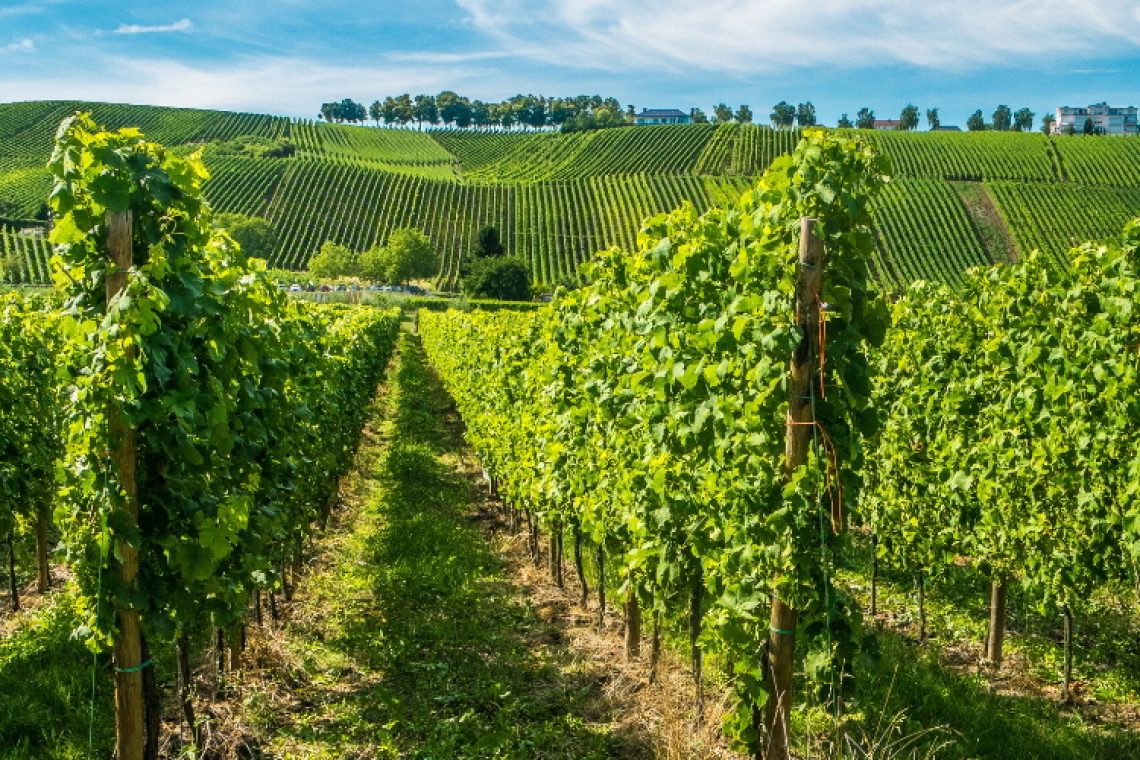Luxembourg: A small wine-growing region
with great potential
Luxembourg’s wine is not only highly praised in its home country. And the local winegrowers and their wines are absolutely worth a trip to the Moselle. But, if you don’t have the time for a trip, why not put together a selection on Letzshop and have it conveniently delivered to your home to taste and enjoy?
The winegrowing culture on the Moselle
At the end of the fourth century AD, the Roman poet Ausonius enthused about viticulture on the slopes of the Moselle, where the higher-lying plots were planted with vines. But grapes had already been cultivated in our regions many centuries before, and in the Middle Ages the monasteries were to continue the culture of viticulture. In this period of warmer climates, more and more vines were planted, not only on the Moselle, but also on the Sûre and the Our.
All beginnings are difficult
At the end of the 19th and beginning of the 20th century, mainly simple varieties were cultivated in Luxembourg, such as Elbling, which was mainly used in Germany for the production of sparkling wine. Then came severe crises: Phylloxera, introduced from the USA, destroyed the vines, the two world wars and the upheavals on the European markets forced the winegrowers to reorient themselves. More varieties were planted, investments were made in modern pressing methods and more and more emphasis was placed on quality. A new generation of well-trained viticultural technicians and oenologists raised Luxembourg wines to a new level, and the winemakers were able to present their wines with great success at international competitions.
The ‘Crémant’ becomes a star
A number of innovations gave a boost to Luxembourg viticulture, most notably the introduction of the ‘Crémant de Luxembourg’ in 1991, which not only revolutionised sparkling wine production and gave winemakers a real success product, but also raised quality awareness in general. Today, about three million bottles of Crémant are produced annually, and hardly any wine cellar can do without it, because it is an important factor for cash flow. Many wine cellars offer several cuvées; the palette ranges from traditional crémants to vintage cuvées and rosé crémants to noble cuvées in higher price ranges. Since the 2016 vintage, by the way, ‘Crémants millésimés’ have to lie on their lees for at least 24 months in order to be recognised as such according to the AOP.
The ‘Appellation d’Origine Protégée’ (AOP) is created
Another milestone in 2014 was the introduction of the ‘Appellation d’Origine Protégée’ (AOP), a quality system for wines and crémants with which the European Commission protects quality wines from certain regions. A new official quality pyramid was created with three different levels: Côtes de… (maximum yield of 115 hl/ha for Elbling and Rivaner, 100 for the other varieties), Coteaux de…wines (maximum yield 75 hl/ha) and finally Lieu-dit-Crus with specific site designations, i.e. wines from particularly good terroirs.
In practice, winegrowers often limit the maximum yields even more, so that Luxembourg wines with yields of less than 50 or even less hectolitres per hectolitre are no longer rare. The price of such wines rises accordingly.
The emergence of the quality labels
In order to give their top wines a special attention and to make them stand out from the normal production, the winegrowers created quality charters over time. The oldest charter label for Luxembourg wines dates back to 1988: ‘Domaine et Tradition’. Seven pioneering wineries voluntarily created this charter, which already specified a maximum yield in order to exploit the potential of the best sites; today, eight wineries belong to the charter.
With the 2007 vintage, the association of private winegrowers introduced its own charter, today’s ‘Charta Luxembourg’ or ‘Charta Privatwënzer’. Not every winery offers Charter wines, and the number varies considerably from vintage to vintage.
In 2008, the first cross-border winegrowers’ charter was launched: The ‘Charte Schengen Prestige’ unites Luxembourgish winegrowers and the cooperative winegrowers of the Domaines Vinsmoselle, as well as businesses from the German and French border regions.
Varietal diversity
Overall, the variety diversity – the ratio of grape varieties to total cultivated area – has changed greatly over the years. Luxembourg has less than 1300 hectares of vineyards between Schengen and Wasserbillig, spread over 42 kilometres. In addition, there are a few hectares cultivated by three winegrowers on the Sûre.
Whereas 50 years ago the varieties Elbling and Rivaner still largely dominated, their stock has given way to classic noble varieties such as Pinot Gris, and Chardonnay and Pinot Noir have now become standard varieties.
According to the Luxembourg Wine Institute in Remich, the varieties are distributed as follows (as of 15 May 2022):
- Rivaner: 254.9 hectares (20.5 % of the area)
- Pinot Gris: 195.4 (15.6 %)
- Auxerrois: 185.7 (14.9 %)
- White Burgundy: 161.1 (12.9 %)
- Riesling: 159.9 (12.8 %)
- Pinot Noir: 131.6 (10.5 %)
- Elbling: 58.6 (4.7 %)
- Chardonnay: 57.4 (4.6 %)
- Gewürztraminer: 20.6 (1.7 %)
- St. Laurent: 3.7 (0.3 %)
- Pinot noir précoce: 2.7 (0.2 %)
- Sauvignon blanc: 1.0 (0.1 %)
- Dakapo: 0.9 (0.1%)
- Silvaner: 0.5 (0.05 %)
- Other varieties such as Cabernet blanc or Pinotage: 14.3 (1.1%) in total.
Of late harvest wines and straw wines
Those who like liqueur wines or sweet dessert wines will also get their money’s worth in Luxembourg. Late harvest wines and straw wines are concentrated grape nectars made from very ripe or even dried-out grapes.
When climatic conditions allow, winegrowers leave their grapes hanging longer in some plots to harvest them later than those for normal production. Sometimes these grapes are then attacked by the noble fungus Botrytis cinerea, which leads to the evaporation of the water in the grapes; this results in a natural concentration of the ingredients and the aromas. Late harvest wines are made from the varieties Auxerrois, Pinot Blanc, Pinot Gris, Riesling and Gewürztraminer.
Straw wines are special nectars. Auxerrois, Pinot Blanc, Pinot Gris and Gewürztraminer are the approved varieties for the production of ‘vin de paille’. Only very healthy grapes are used and dried on straw mats for at least two months. What remains is a dense, oily nectar that can contain more than 200 grams of sugar per litre.
Ice wines are very popular and expensive rarities and are only made from Pinot Blanc, Pinot Gris or Riesling. These specialities have become very rare, because ice wines have hardly been produced in recent years due to the mild winters – an outside temperature of at least -7 degrees Celsius is required for an ice wine when the naturally frozen berries are harvested. They are gently pressed so that only sugary extract is obtained; the acidity is also highly concentrated and an ice wine often does not even contain ten per cent alcohol.
Further articles



















